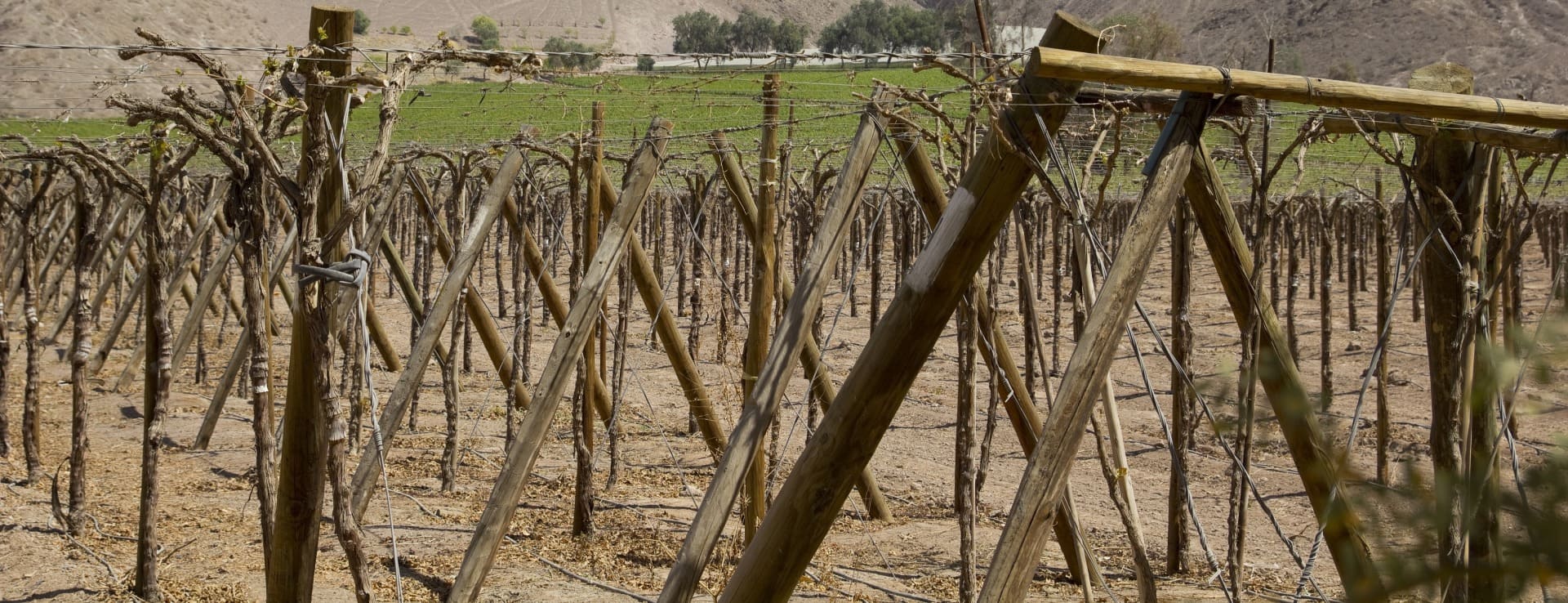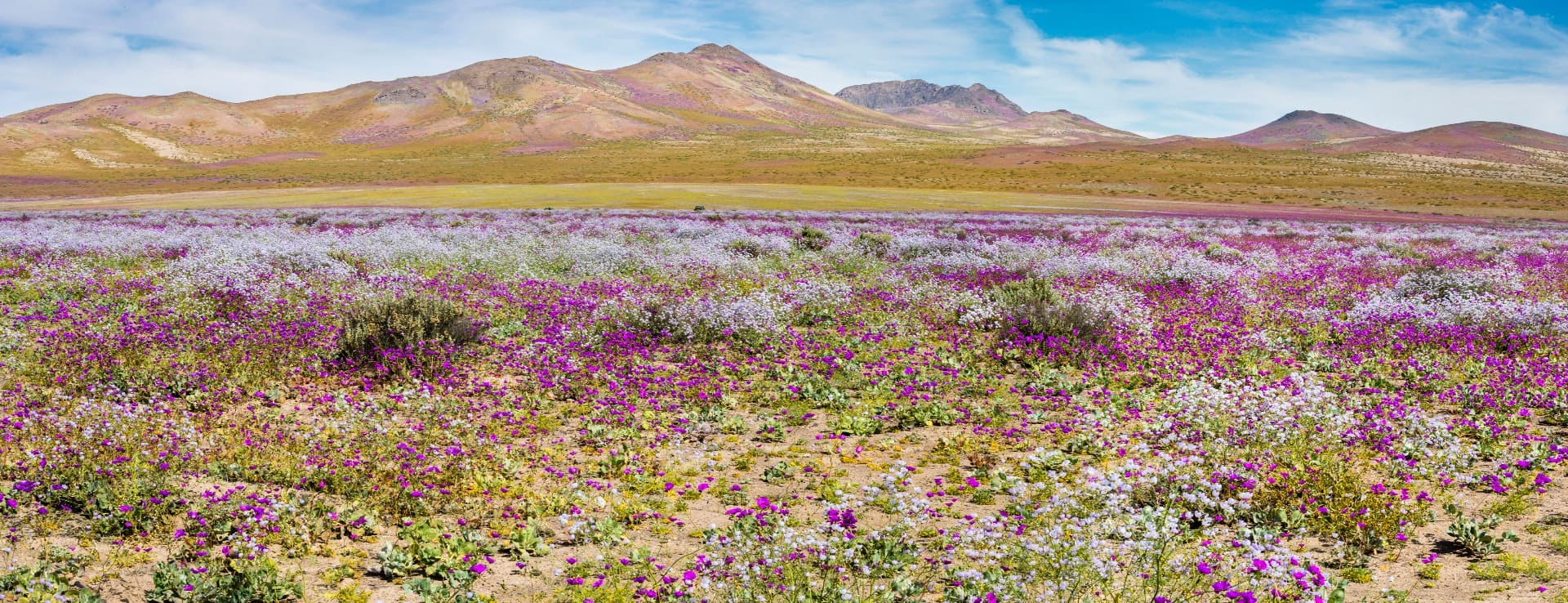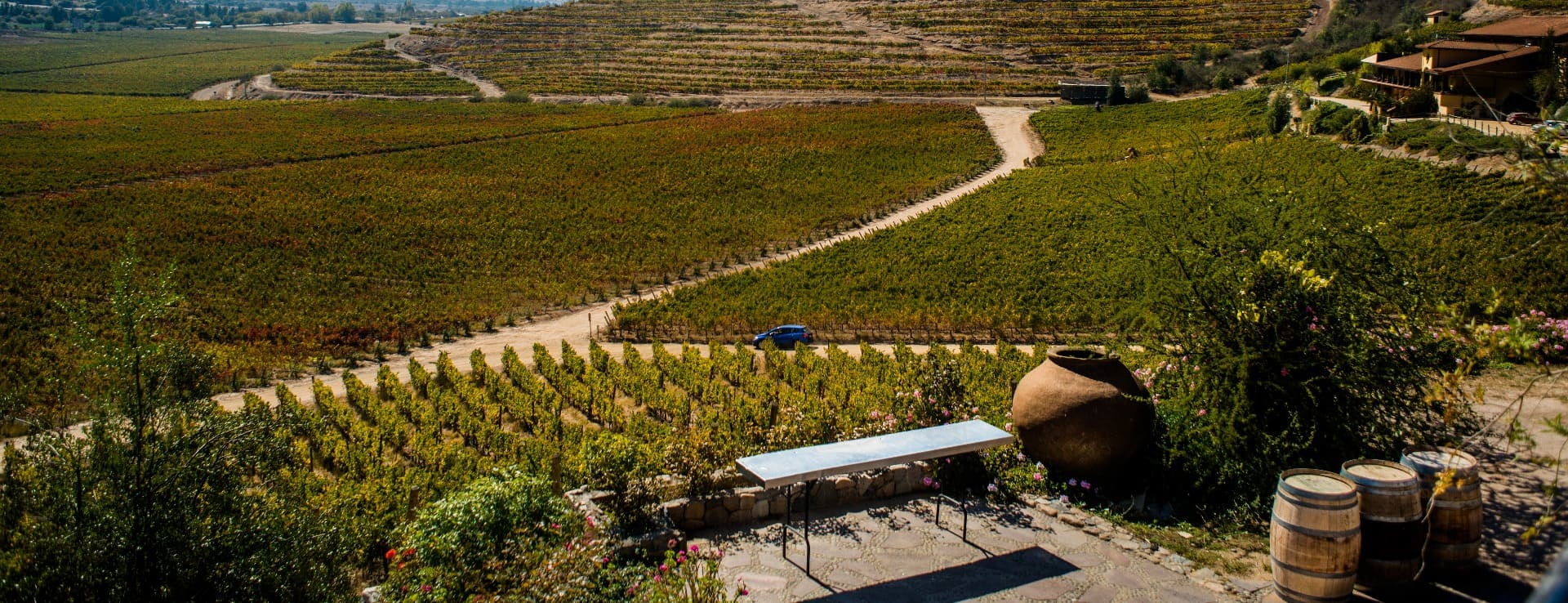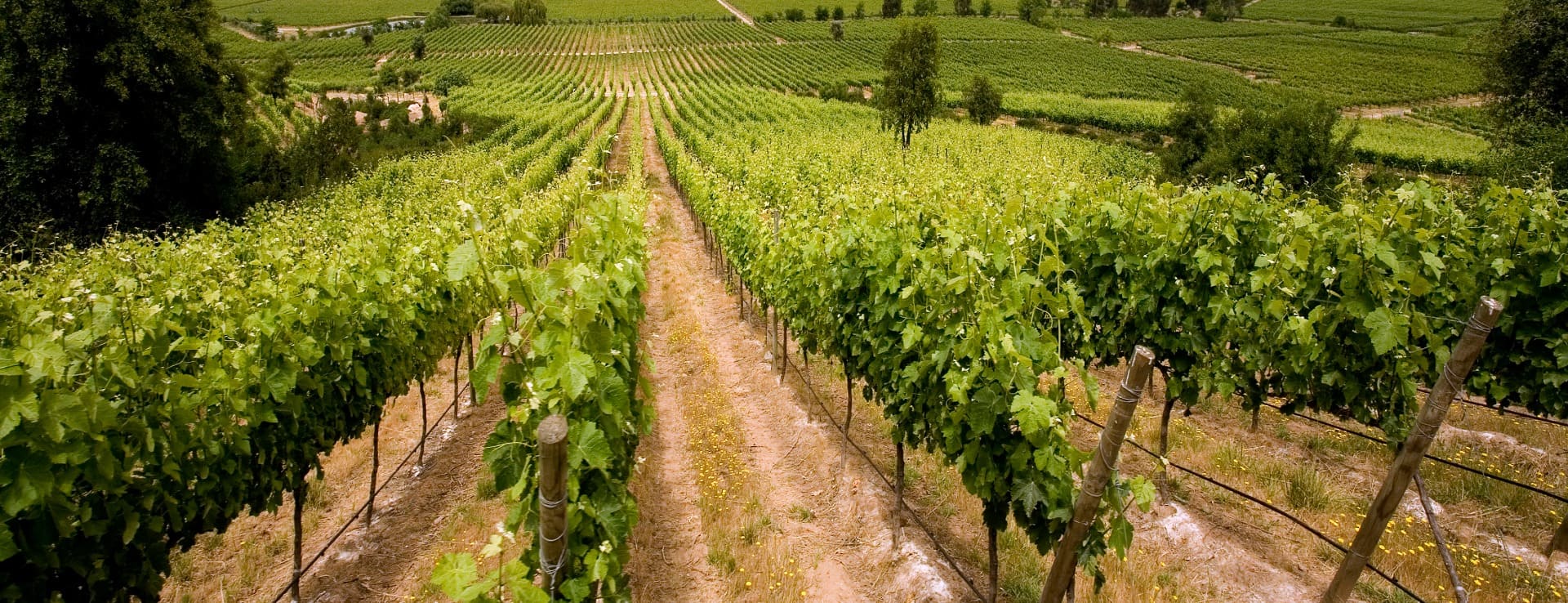Find your winery or vineyard
Infographic of the Denomination of Origin
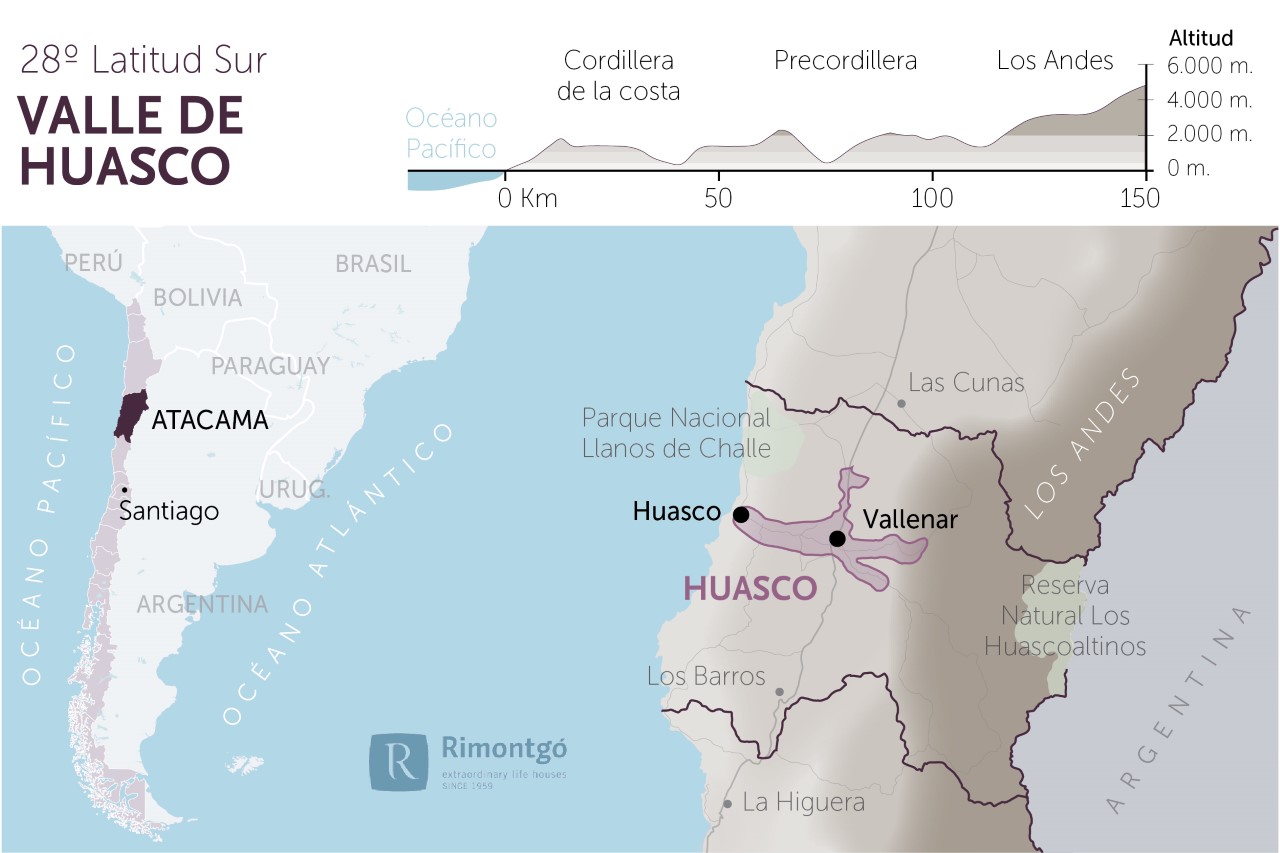
Change to imperial units (ft2, ac, °F)Change to international units (m2, h, °C)
Total surface area:
300 ha741 ac
Altitude of the vineyards:
Min: 100m
Max: 3.500m
Min: 328ft
Max: 11.484ft
Temperature:
Min: 9º
Max: 26º
Min: 48°F
Max: 79°F
Yearly rainfall:
65 l/m26 l/ft2
Designation of origin Valle del Huasco
LOCATION AND HISTORY
The designation of origin Valle del Huasco is included within the wine region of Atacama. It occupies the whole province of Huasco. The designation of origin Valle del Huasco is well-known among Chilean people as “Jardín de Atacama”. Historically, this designation of origin has pointed its vines to the production of grapes in order to elaborate pisco, a sweet distillated. Currently, another type of wine is also produced, in addition to the existence of land for olive trees.
SOILS
Considering that the area with no volcanic activity in Chile goes from the Atacama region to the Aconcagua, this fact will define soils different to the volcanic ones; they are arid and semiarid soils.
In the pre-Andean area of the basin, the soils are calcium xerosols and lithosols. The soils of the Huasco Valley and its tributaries in the middle course derive from alluvial sediments in flat terraces with gentle slope and normal drainage. In most cases they have variable salt accumulations and stony features and very poor in organic content.
From the vineyards planted inland, at the foot of the mountain range in what is called the Alto Huasco or Alto del Carmen, historically fresh, sweet and aromatic wines have been produced that are called "pajarete", a mixture of different very aromatic muscat grapes, grown at more than 1,100 meters above sea level.
On the coastal area, soils show severe salinity difficulties aggravated by poor quality irrigation water. The closer you get to the coastal area with soils derived from alluvial content, the more salinity they are. Generally speaking, these are poorly drained soils, from saline to alkaline and sometimes strongly alkaline, with high concentration of salts.
What is known as the Huasco coast, located about 20 km of the Pacific Ocean there are calcareous soils, in which the varieties Chardonnay, Syrah and Sauvignon Blanc are grown, from which complex wines are obtained, with an outstanding natural acidity and saline and mineral notes.
CLIMATE
The designation of origin Valle del Huasco is located on the border with the Atacama Desert; thus, the climate can be considered extreme weather, practically desert in some areas. Most of the vineyards planted in this designation of origin are close to the coast and constantly receive the breeze of the Pacific Ocean as well as plenty of sunshine thanks to the low altitude of the Coastal Range. In the areas situated to the north of the Huasco Valley, the vine plantations are in some cases at an altitude of 3,500 meters of altitude.
TYPE OF GRAPE
As previously mentioned, in the in the most coastal area of the designation of origin, varieties such as Chardonnay, Syrah and Sauvignon Blanc are grown, to which it is necessary to add those cultivated in the Alto del Carmen lands. These are different Muscat grapes such as Alexandria Muscat and Pink Muscat, with which the traditional sweet wine called pajarete is produced. The vineyards dedicated to the production of pajarete can be found at more than 1,100 meters above sea level. To these varieties we must add others such as Viognier, Pinot Noir, Syrah and Merlot.
Discover more wineries and vineyards for sale in these wine regions in Chile
Subscribe to our mailing list to receive news about wineries and vineyards.

